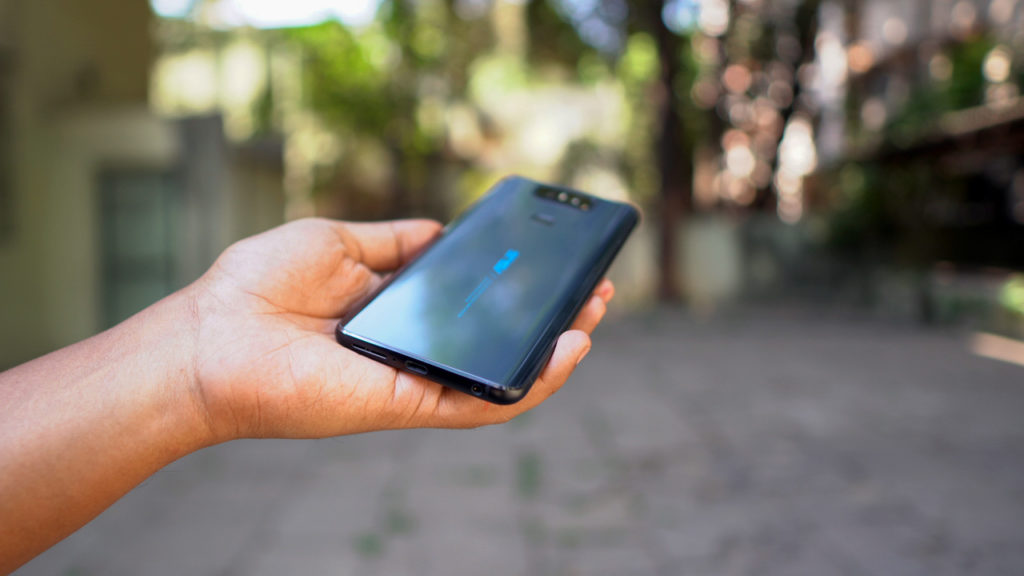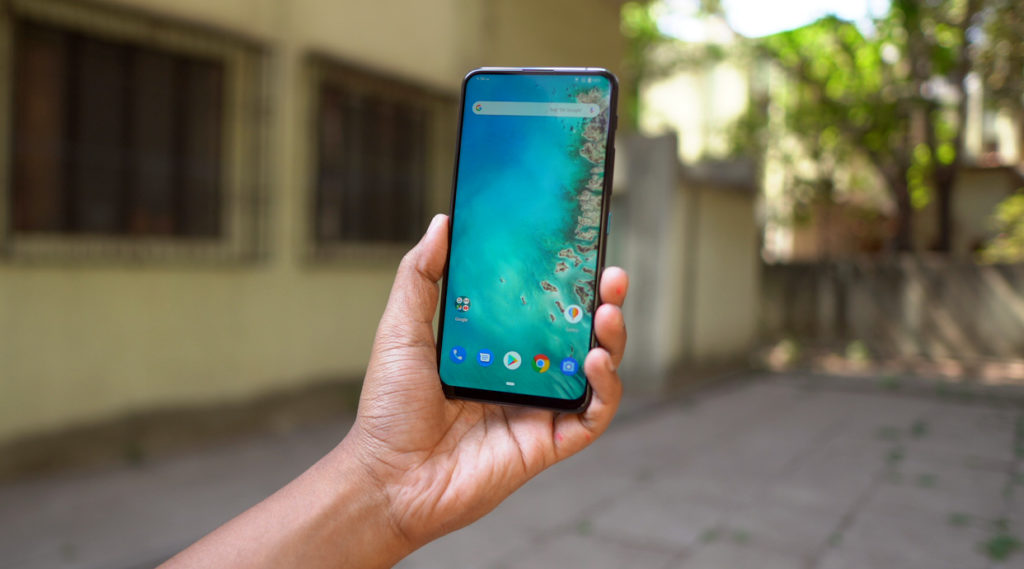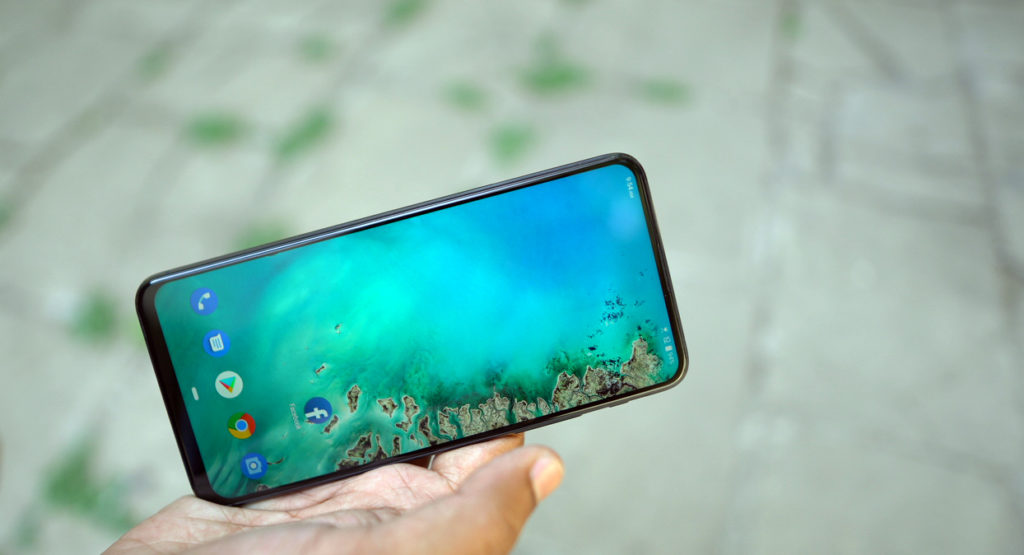Asus Zenfone 6 Unboxing, First Impressions: Flipping Camera’s The USP, Cheapest Snapdragon 855 Flagship
Asus has unveiled its much-awaited Zenfone 6 in Spain, and we luckily got to spend some time with the device. The company is yet to announce the device in India, and Zenfone 6 will go up against the likes of newly launched OnePlus 7 and upcoming Redmi K20.
It will replace the current Asus flagship in the country, Zenfone 5Z.
The smartphone comes with a unique flipping camera, stands out be a highlighting feature on the device.

Backed by some top specs and hardware, Zenfone certainly will put up a good fight in the entry-premium space. The India pricing is also going to be quite aggressive, expected to start at around Rs 30,000.
Here’s our initial impressions of the Asus Zenfone 6.
Contents [hide]
The Aesthetic Design & Solid Build Quality
The Zenfone 6 certainly feels very solid and compact. It’s neither very big, nor heavy in spite of that massive battery. It dons a glass built on both sides, Corning Gorilla 6 upfront and Corning Gorilla 3 at the back. The company is using a rotating module to be used both as front and back cameras.
It’s indeed a unique approach where all companies are going for pop-up sensors and sliders to go notch-less.

Another noticing feature is the physical fingerprint sensor. While companies now are using in-display sensors for flagships, Asus has decided to go with a sensor at the back below the camera module. In many ways, it’s still the best option. Easy to use and no need to spot.
The company hasn’t ditched the 3.5mm headphone jack as well, kudos to it.
Asus Zenfone 6 has a third buttons above the volume rocker on the right, called Smart Key. It can be customised to open anything, like Google Assistant or any specific app or for any function.
We tried out, and it’s quite handy at times.
Also, there’s Dolby Atmos supported dual speakers. You can have a great time binge watching your favourite shows.
Flawless Edge To Edge Bezel-Less Display
Before you compare it with the OnePlus 7 Pro, no the display doesn’t match up to what OnePlus is offering. So, instead of comparing, let’s focus on what it can do. We would be judging if it can work well in the outdoors, does it do the everyday job and is it worth the price or not.
Starting with the design, it’s a notch-less edge to edge display with a slightly larger chin down under and almost no-bezels on top and sides.

Zenfone 6 has more than 91 percent screen to body ratio.
Zenfone 6 packs in 6.46 Full HD+ NanoEdge LCD display. The company could have upgraded to an AMOLED panel, so you won’t get that best of the blacks.
As an addition, the device supports 600 nits of brightness and HDR10.

The LED notifications light sits perfectly under the top bezel to the right of the speaker’s grille, which again is in the camera unit.
The display does tick in all the right spots perfectly. We didn’t have any issues using it in direct sunlight. Definitely not the best we have tested, but is at par with most of the premium flagships available in the market.
The Top-End Hardware
Asus ZenFone 6 is powered by the best Qualcomm processor in the market, the octa-core Qualcomm Snapdragon 855. The chip pairs with up to 8GB of RAM and the well-improved Adreno 640 GPU to take control of the graphics.
Thanks to Snapdragon 855, the device can run anything you throw at it.
With the clean Android UI on top, it makes the job easy for the smartphone. We tried playing PUBG at the highest quality, there’s no issue with it or any drop in frame rate.
In terms of daily performance and efficiency, you can rely on it without a second thought.
We even tried using memory heavy apps at the same time, and Zenfone 6 was able to run all the apps without reloading. The RAM management is quite crisp and accurate.
The Clean UI Stock Android: Icing On The Cake
The Asus ZenFone 6 runs on Android Pie with the ZenUI 6 on top. The newly refreshed ZenUI offers a sleek and clean Android UI, offering an almost stock Android experience.
The company has promised that the device will get version upgrade to Android Q and Android R.
The company has done a great job with the new ZenUI 6 to offer an almost stock-looking Android interface with a number of customisations.
The smartphone also supports a system-wide dark mode. The company has successfully reduced bloatware to just 11 pre-installed apps, and it does run smooth.
Let’s Talk About The Cameras
Asus Zenfone 6 comes with a flipping camera. It’s a dual camera system which sits at the back to be used as a rear camera, but rotates to pop out and work as a selfie shooter. It’s a unique concept, something like we previously saw on Samsung Galaxy A80.

The rotates vertically to face the user of the phone. The ZenFone 6 camera can also be used at different angles by controlling the amount of rotation.
It comes with fall-protection, so the camera will retract automatically to its own position if the phone detects any sort of sudden movement.
The flip is almost instantaneous. It hardly takes a fraction of second to flip in and out.

Coming to optics, the camera comprises of a Sony IMX 586 primary sensor, the 48MP lens with an f/1.79 aperture. It’s paired with a 13MP secondary camera with a 125-degree wide angle lens.
The smartphone doesn’t come with any OIS on either of the camera. Though it comes with EIS assisted by a laser autofocus unit. It does a decent job and videos in 4K come out well stabilized. There’s a dedicated night mode to offer long exposed shots.
Massive Battery Equipped With Fast Charging
Unlike most flagships, Asus Zenfone 6 packs in a humongous 5,000 mAh battery. The huge battery can easily run over a day on a single charge. The company is also offering Qualcomm’s Quick Charge 4.0 technology, so that you can juice up really quick.
Inside the box, there’s a 18W wired charger. It can charge up the device enough under 40 minutes to run for a day.
Finally, Pricing
Asus ZenFone 6 has been launched globally, and is yet to hit the Indian market. The company has confirmed that it will be available in the country soon, and the prices will be announced quickly. In Europe, the device starts at EUR 499 (around Rs 39,150) for the base model with 6GB RAM and 64GB storage.
The mid-end model with 6GB RAM and 128GB storage costs EUR 559 (around Rs 43,850), and finally, the top-tier 8GB RAM with 256GB storage model is priced at EUR 599 (around Rs 47,000).
Asus Zenfone 6 will be available in two colour combinations: Midnight Black and Twilight Silver.
Coming to Asus Zenfone 6 India price, the company will definitely target the entry-premium segment. It will be placing the smartphone against the regular OnePlus 7 and upcoming Redmi K20, the new flagship from Xiaomi.
OnePlus has already launched it’s regular 7 model at a surprisingly lesser price than its predecessor at Rs 32,999. Asus Zenfone 6 should also price it around 30,000 rupees to match up with the competition. Xiaomi is yet to reveal anything about Redmi K20, but the company is going to be very aggressive with the price, maybe around Rs 25,000.
Finally, the Asus Zenfone 6 India launch should happen by the end of month or early June. The company is yet to mention anything officially, so we need to wait.

Comments are closed, but trackbacks and pingbacks are open.